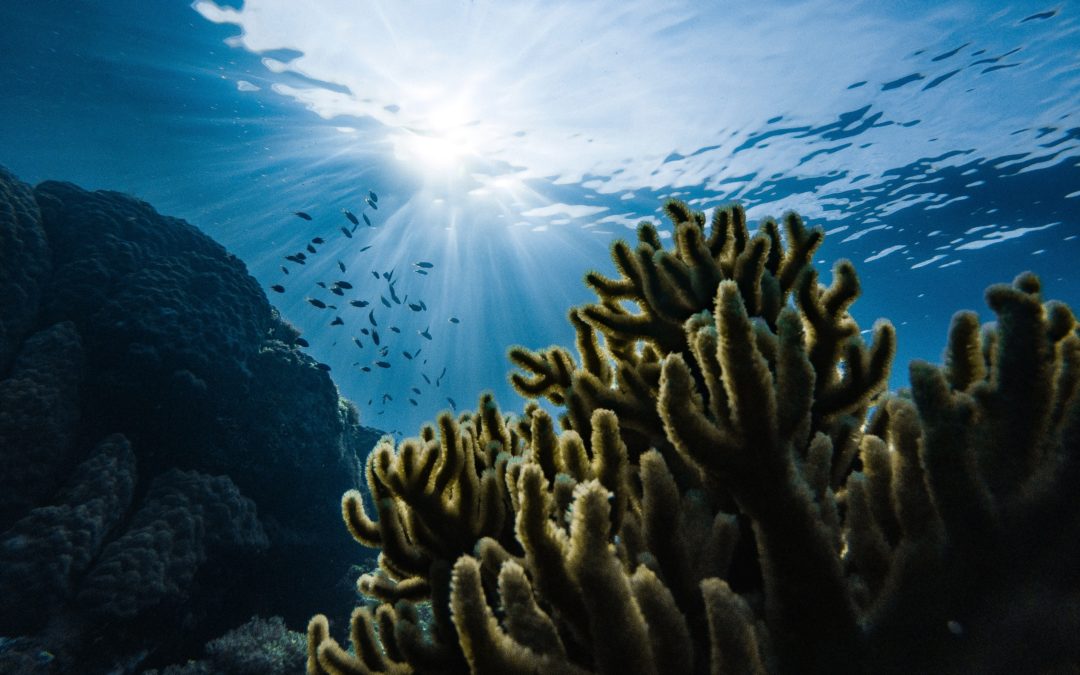The following is a contributed piece by guest writer, Christa Avampato.
This is the second segment of a two-part series. To read part one, visit The Green New Deal and Finding Hope through Biomimicry.
The idea of a Green New Deal, a play on words inspired by Franklin Roosevelt’s New Deal from the 1930s, focuses on a new set of government policies aimed at protecting the health of the planet while also boosting the economy through increased investments in industries such as clean energy and biodegradable materials production. Recently, the idea of a Blue New Deal has also bubbled to the surface – and with good reason.
The Basics of the Blue New Deal
The Blue New Deal is a supporting set of policies for the Green New Deal and specifically focuses on the entity that covers 71 percent of Earth and has absorbed 93 percent of the heat created by human activity for the past 100 years — our oceans.
The Blue New Deal is inspired by the largest peer-reviewed study that has ever been conducted on ocean health. 67 scientists from 17 countries contributed to this research. It was presented by the International Union for Conservation of Nature at the 2019 U.N.’s Climate Change Conference in Madrid. Specifically, the report emphasizes the deoxygenation of the oceans (the literal drop in oxygen levels) and how that deoxygenation may significantly accelerate climate change. It also calls out a number of additional ways in which a warming planet harms oceans, and therefore harms human health:
- Drops in oxygen cause massive die-offs in fish populations, impacting the fishing industry and our global food supply;
- An increased amount of carbon dioxide dissolved in warming oceans causes them to become more acidic, further harming ocean wildlife populations;
- Warmer water takes up more physical space causing sea-level rise and increased flooding in coastal areas; and these warm waters also hold less oxygen than cooler water, further exacerbating the problem of deoxygenation.
If this all sounds like a vicious cycle that’s because it sadly is, and that’s why a set of policies protecting our oceans now is so critical to improving the health of our planet for our benefit and the benefit of all species.
‘The How’ of the Blue New Deal
Unlike the Green New Deal, the Blue New Deal is so new that it doesn’t yet have a set of suggested policies. This new research study has sounded the alarm, and now as a global community we must figure out how to respond. We do know our end goal: to lower the temperature of the oceans so that we can increase its oxygen levels and thereby make strides to lower the temperature of the planet as a whole.
Begin with Biomimicry
Biomimics have an opportunity with the Blue New Deal to get in on the ground floor of shaping these policies and advocating for the health of the oceans as a way to restore Earth’s balance. Because biomimics are skilled at observing nature, extracting nature’s design principles, and then baking those sustainable practices into human-designed products, they have the ideal training to help nature help us help nature. This is how we can transform the current situation of the oceans from a vicious cycle into a virtuous cycle. We can kick off these efforts by helping industries, governments, and individuals understand the vital role that oceans play in our lives, a role that we may not always be aware of – or appreciate.
Medical advances
The oceans contain unprecedented levels of knowledge that are vital to medical advancements. For example, antibiotic resistance, sometimes often referred to as superbugs, is a hot topic in medicine today. Bacteria are becoming increasingly sophisticated and resistant to many of the antibiotics we have. Oceans to the rescue! Scientists have found model organisms in the ocean that produce a chemical that break down the shields that bacteria have evolved to protect themselves from our antibiotics. This innovation holds the key to restoring the effectiveness of our existing medications to treat bacterial infections.
Resilient materials made with life friendly chemistry
Many of our manufacturing processes pollute the planet and produce materials inferior to the ones produced by nature. Let’s consider the glass sponge, an ancient sea creature that lives on the ocean floor. The glass sponge builds one of the most stable, lightweight, efficient, strong, flexible structure on Earth. It self-produces its structure from sea minerals and doesn’t require a kiln, heat, or toxic chemicals. It’s also entirely biodegradable and superior to human-manufactured glass in strength and durability. If we unlock the design secrets of its process, we can make huge strides in our construction industry.
Mechanical navigation and propulsion
Navigating and moving through the ocean is a complicated process. Animals such as European eels, sea turtles, and mantis shrimp are three biological champions who have mastered precision navigation and seemingly-effortless movement through our vast and varied oceans. Scientists and engineers study these animals and thousands of others to improve the navigation and efficient movement of human-designed vessels including cargo ships and submarines.
Simply put, we can’t have a Green New Deal and a balanced planet without a Blue New Deal. The significant surface coverage of the oceans and the many benefits it provides us are vital to human health. Biomimics and their expertise to connect scientists, businesses, governments, engineers, and designers with win-win solutions can be at the center of this new movement. The oceans, and our world, are counting on us to reverse the tide of climate change, and it’s time for us to rise up and answer that call.
Disclaimer: The views and opinions expressed in this article are those of the authors and do not necessarily reflect the official policy or position of the Biomimicry Institute.
 Christa Avampato is a writer and the founder of Double or Nothing Media in New York City. She is currently a graduate student in the Biomimicry Program at ASU.
Christa Avampato is a writer and the founder of Double or Nothing Media in New York City. She is currently a graduate student in the Biomimicry Program at ASU.
Twitter: @christanyc | Instagram: @christarosenyc

